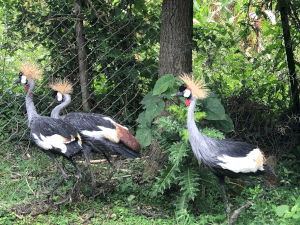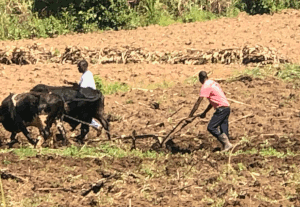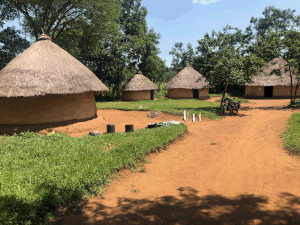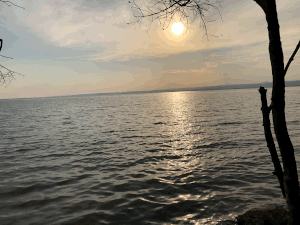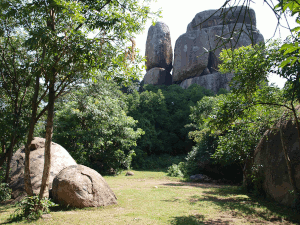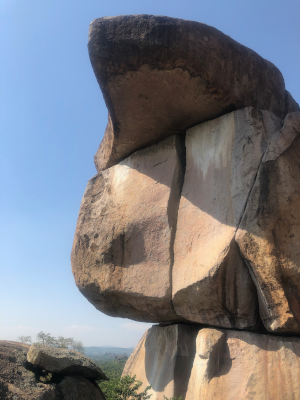Visiting and Living in Western Kenya
The Western part of Kenya is a very interesting and cultural part of the country to live in. It consists of various historical sites and cultural practices that have over time, generated great revenue to the country. Apart from that the climate is suitable for farming and conducive human inhabitation. Some of the counties found in this region include Kakamega, Vihiga, Busia, Bungoma, Kisumu, Homabay, Migori, Kisii, Nyamira, Siaya, Kericho, Eldoret and Bomet.
Kakamega County
Kakamega Town is located on the Western part of Kenya. It is located at an elevation of about 5,100 feet which is equivalent to 1, 550 metres. It has a population of 1, 867,579 (according to the 2019 Census). The local language spoken in Kakamega is Luhya Isukha, Kabras and Kisa specifically. The staple food is ugali (Posho), beans, traditional vegetables, bananas, cassava, yams etc.
Deep in western Kenya, three kilometers outside Kakamega town stands The Crying Stone of Illesi known in the local tongue as Ikhongo Murwi, it is about forty meters tall, a large boulder balanced on a column of rock with water flowing from a groove in the centre. The strange rock formation resembles a solemn head resting on weary shoulders and from certain angles, it looks like a person who is crying. However in recent years the tracks made by water running down the rock face have been more visible because the crying stone of Ilesi is often dry. It has not cried continually as it once did for years and the exact cause is unclear.
Kakamega Rainforest is the only tropical rainforest in Kenya. It is part of a larger area that makes up the last primal rainforest in the country. It is also home to various monkeys (red-tailed and Sykes monkeys and their cousins the olive baboon) and Birds such as the hornbill, grey parrot, black-billed Turaco and the blue-headed bee-eater, some of which are endangered. The forest is also home to over 40 species of snakes including black mamba, green mamba, forest adder, cobras and vipers. Egyptian mongooses, giant squirrels and various species of butterflies can be spotted in the rainforest. Bird watching, forest walking and game viewing are some of the activities offered when visiting the area.
Bull fighting is a cultural practice that has become famous in The Western Part of Kenya. It is majorly practiced by the residents of Kakamega County specifically in Ikolomani and Shinyalu. Bull fighting has been the pillar of fostering peace among the communities of the Luhya tribe. It is bequeathed with a series of rituals in which a special individual is selected objectively to sing war songs to the beast on the eve of the fight. The person talks to the bull preparing it for the fight. Some of the bulls are fed with busaa a local homemade brew that is believed to make them charged, while some with a few puffs of marijuana introduced hours before the fight. The bulls are also exposed to traditional rituals to avoid bewitching from the opposing community but this practice is sacred. During the bloodletting game there are key items that must be present the Isukuti (drum), a special whistle and a ritual rod. Once the whistle is blown the bull begins fighting the rival team's bull.
Bungoma County
Bungoma County has a population of 1,670,570 as per the 2019 Kenya National Census and it as an area of 2,069 square kilometers. Bungoma town is a trading centre that was established in the early 20th century. The name ‘Bungoma’ emanates from drums since the town was a meeting place by the Bukusu elders who used drums ‘engoma’ to summon people to meetings. It was therefore, referred to as the place of drums by the Bukusu hence the name Bungoma.
The main language spoken is Bukusu a sub-tribe of the Luhya. The economy of Bungoma County is mainly agricultural centering on the sugarcane and maize industries. The area experiences high rainfall throughout the year, and is home to several large rivers which are used for small scale irrigation. Some of the historical sites found in Bungoma County include Chetambe Fort ruins, the fort was built by a Tachoni warrior called Chetambe Ifile from where he mobilized his troops to fight the colonialists. It is the site where about 500 people were killed by British troops in 1895.
Kabuchai Hills an excellent place for activities such as camping, hiking, bird watching and taking nature walks. Malakisi falls which is one of the unexplored sites in Bungoma County. The waterfall is located within the Mount Elgon biosphere, close to the rock footprints that locals claim to be of Jesus. The waterfall is surrounded by beautiful vegetation and various bird species. Mwibale wa Mwanja is a sacred site situated about three kilometers from Sang’alo hills. The site features free standing granite monolith believed to be Kenya’s largest single stone monolith. It is a rock that serves as a source of various streams which merge into River Nzoia. Other historical sites worth visiting while in Bungoma include Elijah Masinde Mausoleum where his traditional artifacts and tools are stored, Buteyo Miti Park which features a tree nursery for indigenous trees and a section where herbal medicine is offered, it is suitable for educational and research activities and also nature walks.


